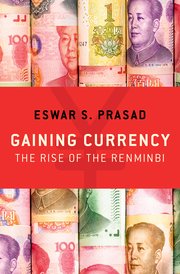Studies in this week’s Hutchins Roundup find business closure rates have been elevated during the pandemic, inflation is affected more by long-run inflationary expectations than aggregate output, and more.
Want to receive the Hutchins Roundup as an email? Sign up here to get it in your inbox every Thursday.
Business closures appear to have increased during the pandemic
Using a variety of indicators on business exit, Leland D. Crane of the Federal Reserve Board and co-authors find some evidence that businesses are closing at elevated rates in 2020. Specifically, ADP payroll data show that shutdown rates in the leisure and hospitality sector peaked in May, exceeding previous years by 5 percentage points, but are now only modestly elevated. The shutdown rates in other sectors, however, are lower than in previous years. Credit-card transactions from small firms in customer-facing industries also show shutdown rate spikes in March and April. While many of those businesses re-opened in May and June, the rate of business closing remains elevated. Moreover, phone-tracking data suggest that the restaurant exit rate through August was 4 percentage points higher than recent years, and retail vacancy rates, small business delinquency rates, and Google search rates for “going out of business” were also elevated in comparison to the recent past. These findings, while tentative, are consistent with official data for prior years which show that firm exit is fairly common (about 7.5% businesses exited annually between 2014 and 2018), countercyclical, and driven primarily by very small firm exits.
Inflation is more sensitive to long-run inflationary expectations than aggregate output
A sharp tightening of U.S. monetary policy in the early 1980s, known as the “Volcker disinflation,” led unemployment to rise and inflation to plummet, reinforcing the belief that the relationship between unemployment and inflation, represented by the Phillips curve, is quite steep. Since the mid-1990s, however, inflation has remained surprisingly unconnected to fluctuations in unemployment. This is not a case of “missing disinflation” or a flattening Phillips curve, argue Jonathon Hazell of Princeton University and co-authors. Instead, they say it reflects the increased stability of long-run inflationary expectations. Using cross-sectional data on U.S. states from 1978 to present to estimate the relationship between regional output and inflation, they find that not only was the Phillips curve in the 1980s flatter than typically estimated—the Volcker disinflation’s 5 percentage point increase in unemployment lowered inflation by only 2.3 percentage points—but that the 4 percentage point fall in long-run inflationary expectations accounts for two thirds of the total drop in core inflation during this time. The stability of inflation since the 1980s reflects the Federal Reserve’s success in anchoring long-run expectations about monetary policy, the authors conclude.
Star companies are contributing less to aggregate productivity
The “productivity paradox” is the observation that aggregate productivity growth has dwindled while “super-star” firms like Facebook, Google and Walmart have become increasingly productive and innovative. Examining top companies by global sales and industry rank, Germán Gutiérrez and Thomas Philippon of NYU challenge this narrative. Today’s top firms are neither larger nor more productive than top firms of 20 year ago, they find. In fact, their contributions to aggregate productivity growth have fallen by more than one third since 2000. These findings explain away some of the productivity paradox, but give rise to a new puzzle. In the 1990s, star firms were huge contributors to aggregate productivity. What changed after 2000, and why are top companies no longer spurring growth?
Chart of the week: Foreign holding of US corporate stock has grown
Quote of the week:
“Central banks have an inherent interest in accompanying the digital transition so that payments remain safe, efficient and inclusive. They must be alert and respond to three trends that are shaping the payments landscape. The first trend is the evolving preferences… While cash is still the main way people make retail payments in the euro area, its role is diminishing. Cash increasingly accounts for a smaller share of point-of-sale and person-to-person transactions… [but] the Eurosystem has a responsibility to ensure that costless, risk-free payment options remain available to all. This includes ensuring continued access to cash,” says Fabio Panetta, member, Executive Board of the European Central Bank.
“The second trend we need to respond to is the evolving structure of the payments market, which risks becoming both more fragmented and more concentrated in each segment… New fintech players increase potential competition and innovation, but only a fraction of their innovative payment solutions are useable for the most common transactions, such as online, in shops and peer to peer…”
“The third trend we need to consider is the increased risks that would be associated with dependence on foreign payment instruments and technologies. While openness to global competition is crucial to foster innovation, excessive dependency on foreign private or public digital means of payment and technologies could lead to adverse effects.”
The Brookings Institution is committed to quality, independence, and impact.
We are supported by a diverse array of funders. In line with our values and policies, each Brookings publication represents the sole views of its author(s).













Commentary
Hutchins Roundup: Business closures, inflation, and more
October 29, 2020